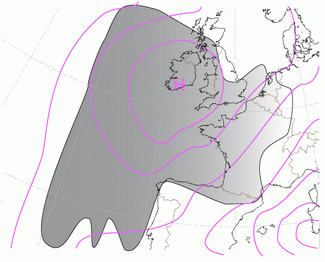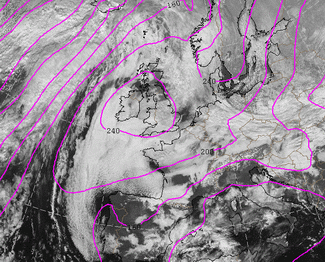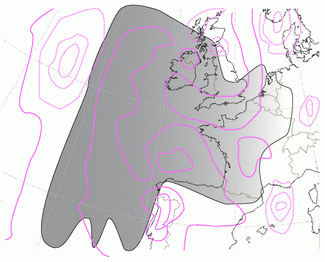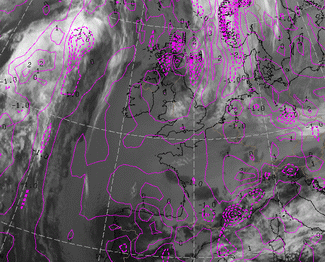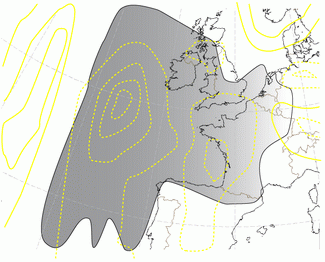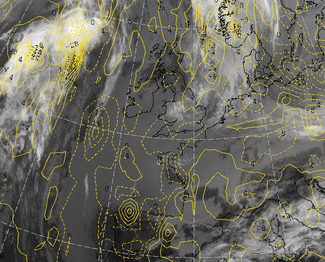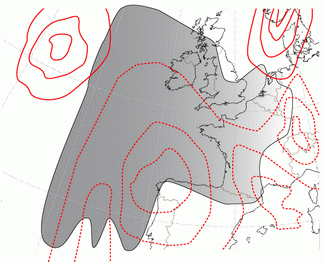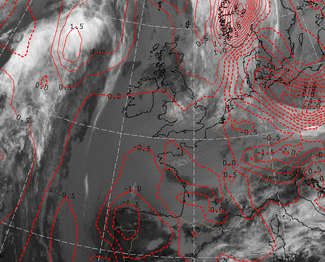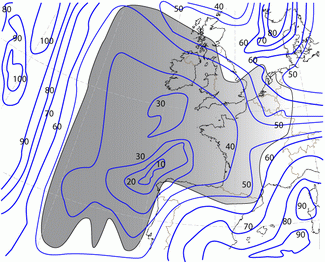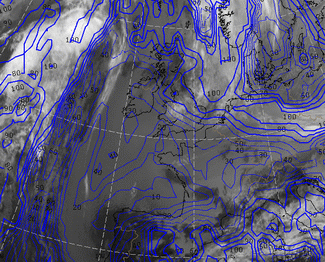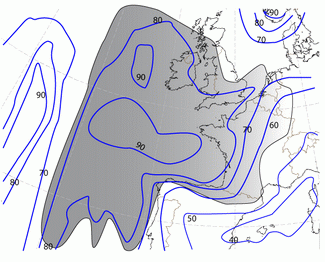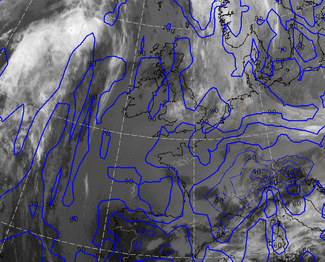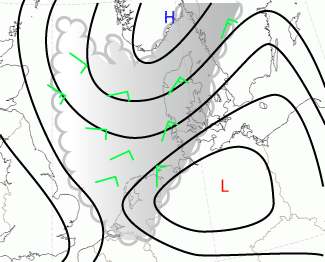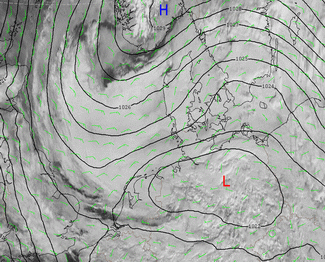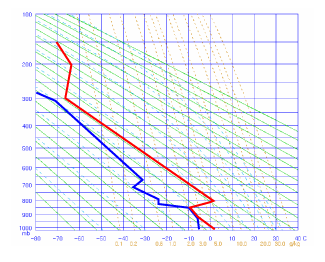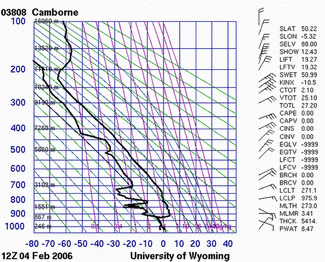Key Parameters
- Height contours at 1000 hPa
- Subsidence:
- Divergence (lower troposphere). For detection of large-scale subsidence.
- Vertical wind speed
- Temperature advection:
Cold advection (lower troposphere). For detection of areas with shallow cold advection. - Low-level humidity:
Moisture in boundary layer is needed for development and maintenance of stratocumulus. - Middle-level humidity:
Low values of humidity in layers above BL indicate subsidence. - Temperature inversion height
- Temperature inversion strength
- Sea temperature
- Difference of sea temperature and dew point of air at surface
- Surface wind (direction/speed)
Absolute topography at 1000 hPa
|
|
04 February 2006/12.00 UTC - Meteosat HRVis image; magenta: height contours 1000 hPa
|
Especially in an extensive area of high pressure (see image: above Ireland and Bay of Biscay) or in a ridge of high pressure (west of coast of Portugal) SC sheets can be found.
Divergence
|
|
04 February 2006/12.00 UTC - Meteosat 10.8 image; magenta solid: divergence 850 hPa, magenta dashed: convergence 850 hPa
|
Divergence at 850 hPa is indicative for subsidence in high pressure area.
Vertical Velocity (850 hPa)
|
|
04 February 2006/12.00 UTC - Meteosat 10.8 image; yellow dashed: vertical downwards velocity 850 hPa, yellow solid: vertical
upwards velocity 850 hPa
|
Downward motion at 850 hPa is showing subsidence and is causing an subsidence-inversion beneath moist is trapped and causing Sc clouds.
Temperature Advection
|
|
04 February 2006/12.00 UTC - Meteosat 10.8 image; red dashed: temperature advection - CA, red solid: temperature advection - WA
|
Cold Advection in lower levels is cooling the atmosphere and with moist advection is causing cloud development under an inversion.
Relative Humidity at 850 and 1000 hPa
|
|
04 February 2006/12.00 UTC - Meteosat 10.8 image; blue: relative humidity 850 hPa
|
|
|
04 February 2006/12.00 UTC - Meteosat 10.8 image; blue: relative humidity 1000 hPa
|
Dry air above and moist air below the inversion is indicative for Sc Sheets.
|
|
19 January 2010/12.00 UTC - HRVis Surface winds (flags in green) and surface isobars (black)
|
Wind speed at the surface under the subsidence inversion is in this case of 19 Jan 2010, and quite often in other situations, about 10-15 kts.
|
|
04 February 2006/12.00 UTC - Radio Sounding Camborne
|
Strong subsidence inversion is shown in the Stüve Sounding diagram of 04 February 2006. Quite clear is seen that moist (SC cloudiness) is trapped under this inversion.
